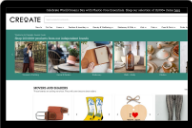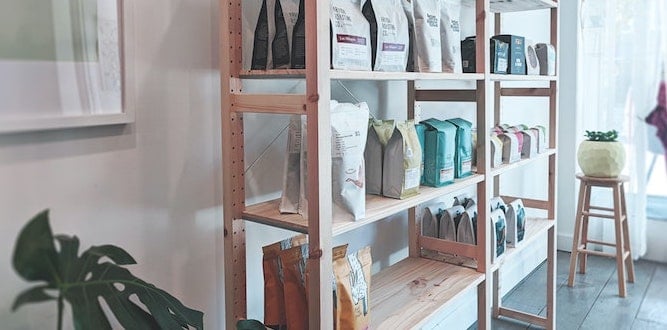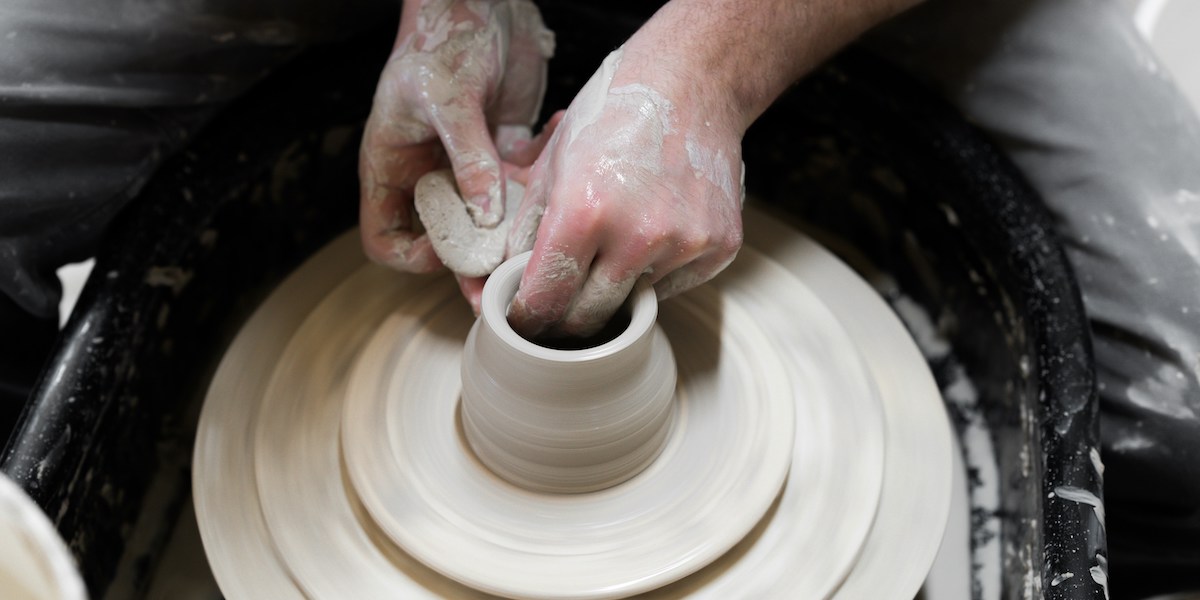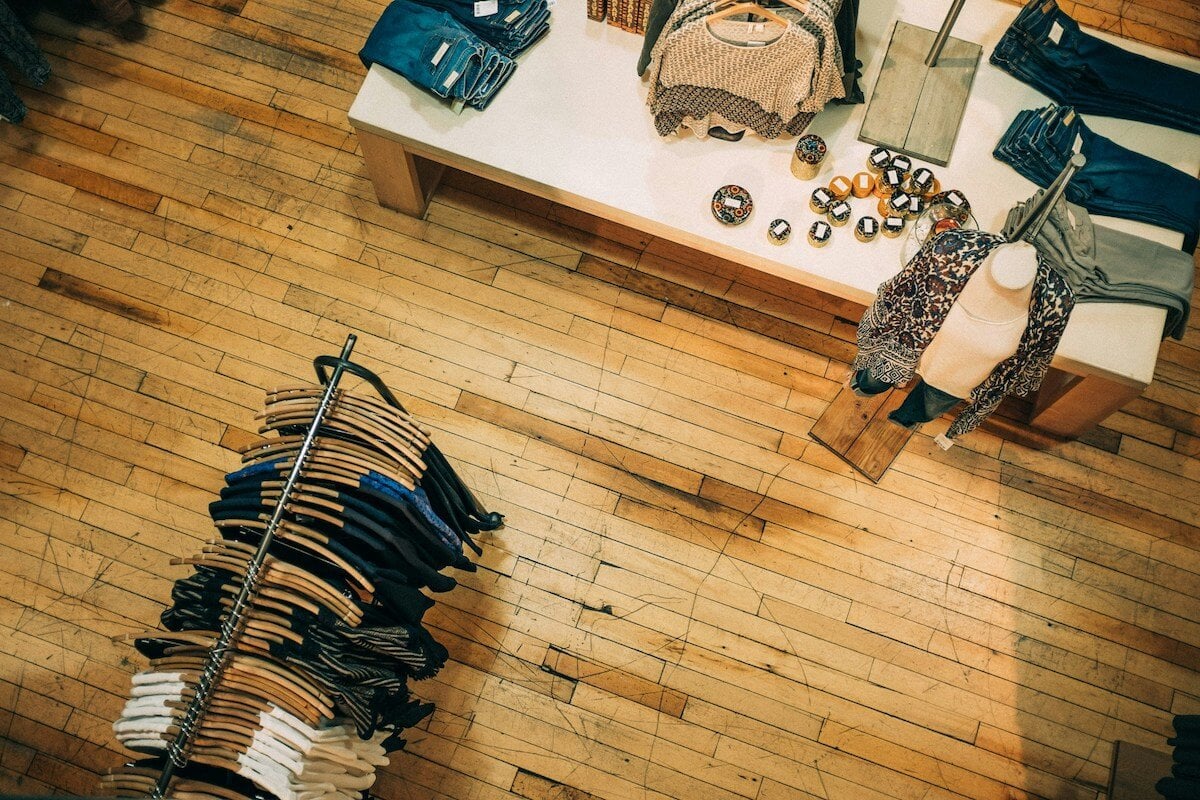
Wondering how much it costs to open a shop in the UK?
We’ve found a lot of online information is pretty vague about the cost of opening a shop, probably because there are so many variables at play.
But if you're actually looking to open a shop, we know that’s pretty unhelpful. Even if costs are rough, you need something to get started with.
Our guide isn’t a substitute for your own thorough research with your business’s own information, but a jumping off point to get you started.
We’ve split it out into upfront and ongoing costs, all based on opening a small retail shop in the UK:
Upfront cost of opening a shop:
- Signing for your retail space (£4,500+)
- Refurbishing & renovating (£500 - £5,000+)
- Props, fixtures & fittings (£300 - £1,000+)
- Your first stock up (£1,000+)
- Equipment & supplies (£100 - £2,780+)
- Utilities deposit (£0 - £1,392+)
- Legal fees (£2,000)
- Extra licences (£0 - £500+)
- Contingency fund (£0 - £10,000)
Ongoing costs to running a shop:
- Staff costs (£2,065/month+)
- Shop insurance (£33 - £46/month+)
- Rent & business rates (£2,200 - £3,700/month+)
- Software & systems (£53 - £368/month+)
- Utility bills (£145 - £464/month+)
- Waste collection (£14 - £25/month+)
Upfront costs for opening a shop
1. Signing for your retail space
Approximate upfront costs for a small Zone 3 London shop:
Deposit: £4,500 - £9,000 (three months’ rent)
Stamp duty: £0 (assuming the annual rent + any Premium is under £150,000)
💡 What’s a ‘Premium’? If you see a ‘Premium’ charge on a commercial real estate listing, this is an amount that needs to be paid upfront when taking over the property. It typically goes to the current leaseholder and might be the cost of taking over their contract, combined with things like existing fixtures and fittings. If you see a ‘Reverse premium’, this is when the landlord is prepared to give you a lump sum upfront to take on the lease, normally if the property has been vacant for a long time, or is in bad condition.
2. Refurbishing & renovating your space
It’s unlikely your new space will be completely ready to go with no further work needed. Once the previous tenants have vacated and taken their equipment and fittings with them, it’s likely some shabbier parts will show through.
Or it might be you’re taking on a much bigger project, such as switching the shop’s main use, or drastically altering the layout.
All in all, it’s impossible to estimate how much you’d spend on this stage. It could be a DIY job that costs a couple of hundred pounds, or a major project that costs tens of thousands. If you’re getting a professional job done though, here’s our advice for keeping costs down:
How to keep shop renovation costs down:
- Be really specific about what you need. Drawing up rough plans and doing your research will help you get more accurate and useful quotes.
- Get plenty of quotes. This is an obvious but important one! Like any quotable work, you’ll see a huge range in prices here. The cheapest may not always be the right route, but give yourself plenty of choice by getting in as many quotes as possible. And make sure you’re clear on how each quote could change, and simpler things like whether or not the total includes VAT.
- Do some of the work yourself. Could you pick up some of the less specialised renovation tasks, like pulling up carpets, stripping wallpaper, or painting walls? This will all help reduce the overall cost of your refurb. Of course, your time has its own opportunity cost (the cost of not doing what you would have done in that time, like working on other areas of your business), but this is a good way to reduce early costs.
We love this shop transformation, and the fact that the whole Laura Aston Design team pitched in to help with the less specialised first steps, before the professionals came in and took over. It's also a great reminder that you don't need to do everything at before opening; if your shop space is good enough as it is, you can always do the 'dream' renovation later down the line.
3. Buying props, fixtures & fittings
Again, how much you spend here depends on your needs (and what’s been left behind by the previous tenants!).
We’ve had a quick look around for common merchandising props and fixtures, and here’s what you can expect to pay:
- Mannequin: £50 - £150
- Clothes rail: £50
- Shop counter: £150-£400
💡 Top tip: save by shopping secondhand. Again, this is another step when planning in advance really pays off, because it means you can take your time to snap up second hand bargains online. This Used Shop Fittings site is a good place to start, as is Gumtree and eBay. This Facebook group is also pretty active!
4. Your first stock up
Buying enough stock to fill your shop on day one is also a pretty significant outlay for a business, and a hard one to get right; at this stage you’re basically guessing what will sell, and in what amounts.
For shop owners like Rachel, who are opening a retail store after successfully growing online, this part can come as a bit of a shock, as she explained:
"Online is very different. You can have things running low, but a physical shop needs to look good and needs to be full and abundant and people need to come in and like, feel like wanting to buy.
You can't have a shelf with one candle on it, you need to have like a collection of like at least five candles, and so on. I hadn't really considered that, and I hadn't properly accounted for the upfront cost of it all. But obviously, you can't have an empty physical shop."
📚 Find out more: What is inventory management? & How to get started
There are a few things you can do to ease or spread the upfront cost of stock:
- Look for net 60 terms. With net 60 terms, you pay for stock up to 60 days after ordering it, giving you a chance to sell things before you have to pay for them, and generally smoothing out your cash flow.
- Take stock with a returns option. The option to send back what doesn’t sell (or some of it, at least) is going to be invaluable to you in those first few months when you’re figuring things out.
- Or try taking products on consignment. Some smaller sellers or artists may agree for you to take their products on consignment, whereby you hold them in your shop for a set period of time, and the seller invoices you for what has sold, and takes back the rest.
- Get into good stockroom habits. Storing stock carefully and in a well-organised stockroom means you’ll find what you need more easily, and lose less stock to damage. Get into good habits from day one.
👋 Wondering how and where to buy wholesale? With CREOATE, you can buy wholesale from over 6,500 independent brands, all in one place. We also offer free returns on first orders, and have net 60 terms available. Start browsing
5. Equipment & supplies
You’ll need some basic equipment to get up and running. Some things, like surveillance and safety equipment, fall into the ongoing costs category, so we’ll get to them shortly.
Here’s a list of some essentials:
- A computer (or a laptop you can work from): from £500
- POS hardware (a till, or at least a card reader): £0 (simple card reader) - £2,000 (full on till)
- Label printer: from £30
- Cleaning supplies (hoover, etc): £50 - £250
- Basic stationery: £20
6. Utilities deposit
When setting up your business utilities, you’ll notice some differences to setting up domestic ones, one of them being that your utilities company may ask for a deposit upfront to hold against your future energy usage, which could be as much as three months’ worth of estimated usage (but is more likely to be around a month’s worth).
While this is a relatively normal practice, it’s also not something that all companies do, so you should be able to find a deposit-free option if that’s your preference.
7. Legal fees
Don’t sign a lease without getting a lawyer involved to review your contract. Yes, it’s another expense now — but it could save you a lot down the line.
Budget around £2,000 for this, although it should be less if everything’s fairly simple.
8. Extra licences
You’ll need to apply for an extra licence if you want to do certain things like sell adult only products, or put signs out on the street. Use the UK government website to find which licences (if any) you need.
The cost varies by licence type and your local authority. As a guideline, having a table and chairs outside could cost around £500 per year.
9. Contingency fund
If you came into work one day to find your shop totally flooded, how would you manage?
Even if you’re insured to the nines, you won’t receive that money until a claim has been finalised. So how will you pay staff, pay bills, and keep yourself going in the meantime?
That’s why it’s handy to have a contingency fund, a ‘break in case of emergency’ cash stash that’s outside of your usual budgeting and forecasting, but there for peace of mind. The more the better, but having around a month’s worth of running costs would be a good target to aim for.
Ongoing & running costs for a shop
So far we’ve costed up how much you could spend getting a shop to open day. But how much will you be spending to run it every month?
1. Staff costs
At some point, you'll need help with running your shop, whether on a part time or full time basis. Here's the breakdown for the cost of one full time employee:
Cost of one full time employee at living wage (outside London):
Monthly salary: £1,820 (£12/hour, 35 hours per week)
Pension contributions: £54.60 (3% of salary)
Class 1 National Insurance: £182 (10% of salary)
Total: £2,065.60
Note that this is a very simple estimate, and doesn't adjust for factors like replacing your staff member during periods of maternity/paternity leave, sick leave, or holiday, so you should adjust depending on what your staffing solution would be in those circumstances.
2. Shop insurance
Shop insurance comes in many forms, but will typically come combined into one quote from a single provider. Here are the main types of shop insurance:
- Employers’ liability insurance
- Shop premise or building insurance
- Business interruption insurance
- Stock/equipment/contents insurance
- Public liability insurance
- Product liability insurance
- Professional indemnity insurance
- Personal accident insurance
As an estimate, we'd allow around £400 - £550 per year for a small shop, so £33 - £46 per month.
📚 Find out more: Shop Insurance Explained: 8 Types of Shop Insurance
3. Rent & business rates
Statista reviewed the average annual rent paid per square foot in ‘prime high street retail’ spaces in other major cities around the UK at the end of 2022, and we’ve applied it to a small(ish) shop size of 500 sq feet below:
| Location (prime retail space) | Average monthly rent |
| London West end - Bond Street | £83,333 |
| London West end - Oxford Street | £27,083 |
| London city | £10,000 |
| Manchester | £9,167 |
| Cardiff | £7,500 |
| Birmingham | £5,625 |
| Leeds | £5,417 |
| Bristol | £3,542 |
Keep in mind that this is for prime, city centre retail space. As soon as you move a little further out in, things get a lot more affordable. We found desirable properties in Zone 3 London going for £1,500 - £3,000 per month.
On the same property, business rates were around £800 per month, but this will again vary by business size and location. For more information about business rates, and how they’re calculated, take a look at our guide to leasing a shop below.
📚 Find out more: How to Lease a Shop: Understanding Commercial Lease Terms & Costs
4. Software & systems
| Software & systems | Basic (/month) | More premium (/month) |
| Website | £10 | £49 |
| Inventory management software | Free | £79 |
| POS software | £15 | £100 |
| Wifi | £18 | £40 |
| Security & monitoring | £10 | £100 |
| Total | £53 | £368 |
5. Utility bills
First up, you’ll be on a business rate instead of a domestic rate. This might look cheaper at first glance, but note that they don’t include VAT, and will fluctuate more often than domestic rates. And depending on your business, your usage may well be higher than at home.
Utility Bidder gives the following utilities estimates for gas and electricity bills for small & microbusinesses. Water rates were trickier to find; we’ve based our estimate on the average household usage, and assumed your water usage at your shop will be very minimal.
| Microbusiness | Usage | Annual bill | Monthly bill |
| Gas | 5,000 - 15,000 | £400 - £820 | £33 - £68 |
| Electricity | 5,000 - 15,000 | £900 - £2,244 | £75 - £187 |
| Water | Minimal | £440* | £37 |
| Total | £145 - £292 |
| Small business | Usage | Annual bill | Monthly bill |
| Gas | 15,000 - 30,000 | £820 - £1,458 | £68 - £122 |
| Electricity | 15,000 - 25,000 | £2,367 - £3,660 | £197 - £305 |
| Water | Minimal | £440* | £37 |
| Total | £302 - £464 |
*Includes an annual standing water and waste removal charge. This is payable annually, but we’ve built it into the monthly estimate
6. Waste collection
And last but not least, you’ll need to arrange additional waste collection for your shop. For a small shop, you’re looking at about £170 - £300 per year, or £14 - £25 per month.
Wrapping Up: How much does it cost to open a shop
We hope this guide has given you a useful sense of some of the costs to consider when opening and running a shop in the UK, even if only a rough one!
Now you’re across the costs, some of the guides below might be helpful for taking the next step on your retail journey:
- How to Create a Business Plan
- How to Open a Shop: From Idea to Open Day, and Beyond
- How to Finance Your Retail Business: 5 Options to Consider
Or explore our Store Spotlight section for inspiration and nuggets of advice from those who've been there before!








